General Image Quality
For these pictures, the cameras were reset to their factory default setting. Then, they were set to their highest quality recording setting. The pictures were then taken in Auto mode unless stated otherwise. Click on a thumbnail to view the full-size image. The crops below the thumbnails are 100%. All images are sRGB.| Fuji A330 | ||
 Click to enlarge. |
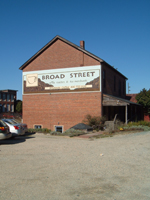 Click to enlarge. |
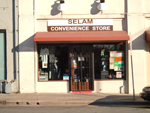 Click to enlarge. |
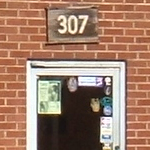 |
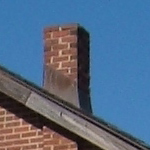 |
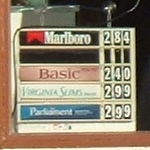 |
As the above crops demonstrate, the Fuji A330 has no major problems to speak of. We are pleased to see that the A330 is able to capture pictures with impressive detail without over-sharpening the images. Notice the lack of jaggies in these images. The images are well-exposed with a reasonable amount of saturation. Also, we are unable to spot any significant chromatic aberrations in any of the images. Overall, the Fuji proves to have very good image quality.
| Kodak CX7330 | ||
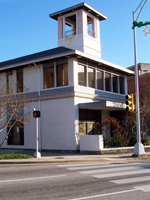 Click to enlarge. |
 Click to enlarge. |
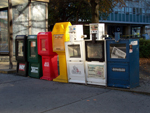 Click to enlarge. |
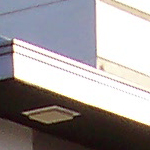 |
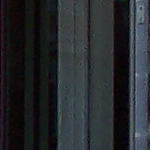 |
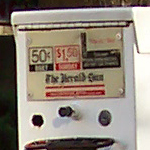 |
The Kodak CX7330 image quality is not too bad overall. The images all appear to be well-exposed with a decent level of detail. In addition, we couldn't find any chromatic aberrations. One of the main problems we noticed is that the CX7330 uses a bit too much sharpening, resulting in jaggies along lines. In fact, in the third crop, you can see how over-sharpening appears to result in the loss of detail. The other problem is the visibility of JPEG artifacts throughout the CX7330's images. These JPEG artifacts are a result of highly-compressed images in an attempt to lower the size of the files. We expect better-looking JPEGs from the highest quality option.
| Olympus D-540 | ||
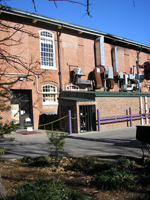 Click to enlarge. |
 Click to enlarge. |
 Click to enlarge. |
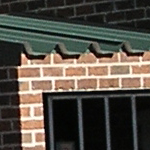 |
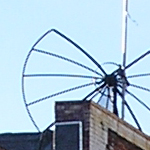 |
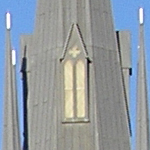 |
Unfortunately, it also shares the over-sharpening problem that we saw in the Kodak camera. This results in the common appearance of jaggies. The camera also appears to produce images with a relatively high contrast compared to the other cameras. In the 2nd and 3rd samples, the Olympus proves that it can capture some fine detail despite its over-sharpening problem.
Sometimes it is easy to look at the pictures from each camera and see which is best. Unfortunately, this is not one of those cases. Each camera is capable of producing some decent-looking pictures. All three cameras had no problem producing well-exposed and well-saturated images with no signs of chromatic aberrations. In fact, the differences between these cameras are rather subtle. We found that the Kodak and Olympus cameras both seem to have an issue with over-sharpening. Upon close inspection of the images produced by these two cameras, we found unsightly jaggies to be common. In the case of the Kodak camera, we also found JPEG artifacts caused by the camera's over-compression of its images. Overall, we prefer the look of the Fuji A330's images because of their smooth, yet detailed appearance.
Night Samples
| Fuji FinePix A330 | Kodak CX7330 | Olympus D-540 |
 (0.8 sec., f/2.8, ISO 100) Click to enlarge. |
 (0.5 sec., f/2.8) (Click to enlarge. |
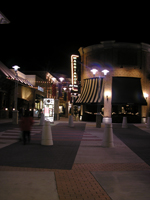 (0.5 sec., f/2.9, ISO 50) Click to enlarge. |
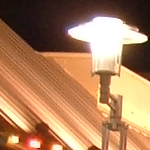 |
 |
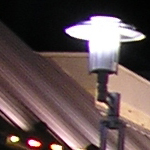 |
In this comparison of each camera's night setting, the Fuji A330 proves to provide the most detail. We can see some chromatic aberrations in the Kodak image along with some jagged lines ("jaggies"). The Olympus D-540 comes close to matching the quality of the Fuji. However, it falls short with more noise and an overall soft appearance. The Fuji camera also has the advantage of a 2 second maximum shutter speed, while the Kodak maxes out at 0.5 sec. and Olympus at 1 second.
Movie Mode
| Fuji A330 | Kodak CX7330 | Olympus D-540 |
 (320x240, 10 fps) Click to view. |
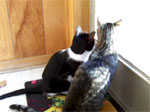 (320x240, 15 fps) Click to view. |
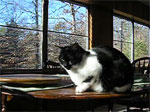 (320x240, 15 fps) Click to view. |
As you might expect from a $150 point-and-shoot, the video modes on these cameras aren't too spectacular. However, there are some noteworthy differences between them. For example, the Fuji camera is the only one that will limit the duration of the video clips (60 seconds at 320x240). The Kodak and Olympus cameras with allow you to record until you run out of space. Also, the Kodak camera is the only one that will record audio along with the video. The Olympus camera offers the most recording control. For example, it is the only camera out of the three that lets you utilize the optical/digital zoom (while recording), adjust white balance, and set exposure compensation.










16 Comments
View All Comments
akaristos2 - Tuesday, February 8, 2005 - link
Any sources in Europe where it could be had for 129 euros? Much appreciated a reply. Thanksakaristos2 - Tuesday, February 8, 2005 - link
Where can I gt a Ricoh Caplio RX and at what price point. Thanks for a reply.cryptonomicon - Wednesday, January 5, 2005 - link
the a340 will probably enter the price point soon too, i got it for $161 at ritz's / wolf's.tmim16 - Monday, January 3, 2005 - link
I got the Fuji A330 for my wife back in May for her birthday not knowing that much about it, but man were we impressed! I got it as a mother's day newegg special for $180 including a 128MB xd card.Even though I'm not in the market for another camera, I would have liked to see a couple more compared.
orenb - Monday, January 3, 2005 - link
Zepper, the Ricoh Caplio RX can be had for €129 in Europe, which is not that far off $150.As for not having it in the US, well, that's a bummer. Having to settle for plastic toys that take almost a whole second to actually shoot sucks, especially when one has to pay roughly the same price as the RX.
Both Ricoh and American residents are losing big time from this, the former loses a huge market, the latter loses some really cool and innovative cameras, but since Ricoh can't handle the demand in Europe (at least in the UK and Germany they can't), I bet they have a good reason to wait with a US launch.
unclebud - Monday, January 3, 2005 - link
"Nice article... would have been nice to see it BEFORE the holidays though ;) "what i was thinking (although i have 6 or 7 digicams and ain't gone buy another one for more than a hundred)
Zepper - Monday, January 3, 2005 - link
Almost no Ricoh product is available in the USA as Ricoh has chosen not to compete here in the consumer market (perhaps you weren't aware that AT was an American web site). I guess it's not too hard to get their copiers here though.. Not to mention that the price of the few Caplio RXs I've found such as on eBay is about twice that of the units under test - apples and oranges...
.bh.
spug1 - Sunday, January 2, 2005 - link
...geez everyone!! Get off their back. It would be an impossible job to do all of the cameras at this price point! Kodak, fuji and olympus are big names, which people will often go to straight away....so its allowing the customer to make an educated choice on popular brands. I sell a large range of cameras at my shop, and I most always recomend the a330. Its a beautiful little camera, and IMO the best bang 4 buck at this price!!Souka - Sunday, January 2, 2005 - link
Title should be "Three $150 digi-cams compared"Z80 - Saturday, January 1, 2005 - link
I'm on my third Fuji digital camera and they have all been great performers! They all still work too! The latest model I purchased last year just before Christmas was the FinePix S5000 with 10x optical zoom. I've found that the xD-Picture Card memory helps lengthen battery life to where I can shoot well over 100 photos without recharging the batteries. Also, the Fuji cameras all appear to have better jpeg compression that other cameras because my photo files at 3.1 or 4.2 Megapixel take less space than other cameras. When my family got together and compared photos after our Christmas party last weekend, my Fuji consistently took better photos than the other cameras. Even the Canon Digital Rebel that my nephew didn't really know how to use.